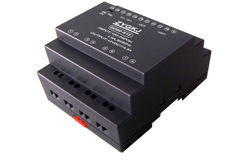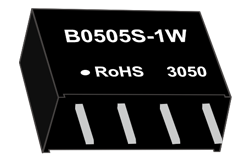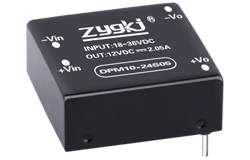nouvelles
Creating an AC-DC Converter: A Guide to Converting Alternating Current to Direct Current
Auteur: Module d'alimentation ZYG Time: 2023-4-12
If you work with electronics, you may find yourself needing to convert AC (alternating current) to DC (direct current) at some point. This can be done with a simple AC-DC converter circuit. In this guide, we walk you through the process of creating your own converter circuit.
First things first, let\ explain the difference between AC and DC. Alternating current is the kind of electricity that comes out of your wall socket. It oscillates back and forth, changing direction 50 or 60 times per second. Direct current, on the other hand, flows in one direction only. Most electronic devices require DC to function.
To create an AC-DC converter, you need a few basic components. These include a transformer, a diode bridge, and some capacitors. Let take a closer look at each of these.
The transformer is the first component in the circuit. Its job is to step down the voltage of the AC input to a lower level that can be handled by the diode bridge. The transformer consists of two coils of wire wound around an iron core. The input AC voltage is applied to one coil, while the output DC voltage is taken from the other coil.

The diode bridge is the second component in the circuit. It consists of four diodes arranged in a bridge configuration. The diodes allow current to flow in only one direction, effectively converting the AC input to DC output.
The capacitors are the final components in the circuit. They work to smooth out the DC output, removing any remaining AC ripple. Two capacitors are used in the circuit: a large electrolytic capacitor and a smaller ceramic capacitor.
Now that we understand the components, let take a look at the circuit diagram.
As you can see, the transformer is connected to the AC input, while the diode bridge and capacitors are connected to the DC output. The large electrolytic capacitor is connected in parallel to the DC output to smooth out the output voltage. The smaller ceramic capacitor is connected in parallel to the large capacitor to filter out any high frequency noise.
When you assembled the circuit, you can test it by connecting a voltmeter to the DC output. You should get a voltage that is slightly less than the voltage of the AC input. For example, if your AC input is 120 volts, your DC output should be around 110 volts.
In conclusion, creating an AC-DC converter is a simple process that can be accomplished with a few basic components. By following the steps outlined in this guide, you should be able to create your own converter circuit with ease.

Précédent: The Future of AC-DC Converter Factories: Trends and Technologies to Watch
Prochain: Titre : Comprendre les convertisseurs AC-DC : un guide pour débutants
les informations pertinentes
-
2023-4-21
Alimentation AC-DC : une source d'énergie électrique fiable
An AC-DC power supply is a device that converts alternating current (AC) into direct current (DC) in order to provide a reliable and stable source of electrical power. This type of power supply is commonly used in electronic devices, ranging from small battery-operated devices to large industrial equipment. The main advantage of an AC-DC power supply is its ability to provide a constant and stable source of DC power, regardless of the fluctuations in the AC input voltage. This is achieved through the use of rectifiers and voltage regulators, which convert the AC voltage to DC and regulate the output voltage respectively. There are various types of AC-DC power supplies available in the market, including linear power supplies, switch-mode power...
Voir les détails -
2023-7-19
China high quality SM Series: AC DC Power Supply for Reliable and Efficient Performance
Introduction In today's world, reliable and efficient power supply is essential for the smooth functioning of various electronic devices and systems. Whether it is for industrial applications, telecommunications, or medical equipment, a high-quality AC DC power supply is crucial. That's where the SM Series comes in. The SM Series is a range of power supplies known for their reliability and efficiency, providing a stable and clean power source for a wide range of applications. Reliability One of the key features of the SM Series is its exceptional reliability. Built with top-notch components and designed to withstand harsh environments, these power supplies can operate continuously without any interruptions or failures. The SM Series is known for its long lifespan, ensuring that...
Voir les détails -
2023-5-4
AC-DC Power Supply: Delivering Reliable and Efficient Power Conversion
An AC-DC power supply is an essential component in many electronic devices and systems that require reliable and efficient power conversion. It converts the alternating current (AC) input voltage from a power source into a direct current (DC) output voltage that can be used by electronic circuits and components. The power supply typically consists of several stages, including rectification, filtering, voltage regulation, and protection. The rectification stage converts the AC input voltage to a pulsating DC voltage, which is then filtered to smooth out the voltage waveform and reduce noise and ripple. The voltage regulation stage maintains a constant output voltage despite changes in the input voltage or load conditions. Finally, the protection stage ensures that the power supply operates...
Voir les détails -
2023-11-4
DC to DC Power Supply Module: Efficient and Reliable Solution for Voltage Conversion
Introduction: DC to DC power supply modules are electronic devices that convert one DC voltage level into another. They play a crucial role in various electronic systems, where different voltage levels are required for proper functioning. These modules are highly efficient and reliable, making them an essential component in industries like telecommunications, automotive, aerospace, and renewable energy. Efficiency of DC to DC Power Supply Module: One of the key advantages of using a DC to DC power supply module is its high efficiency. These modules are designed to operate with minimal power loss during the conversion process. Unlike traditional linear regulators, DC to DC power supply modules utilize switching techniques, such as pulse width modulation (PWM) or frequency modulation (FM),...
Voir les détails -
2023-10-18
Fully Modular Power Supply: The Ultimate Solution for Efficient and Customizable Energy Delivery
In today's rapidly evolving technological landscape, the demand for efficient and customizable energy delivery has never been greater. Whether it is for personal computers, servers, or even renewable energy systems, a reliable and versatile power supply is paramount. This is where fully modular power supplies come into play. With their advanced features and innovative design, they offer the ultimate solution for efficient and customizable energy delivery. A fully modular power supply is a type of power supply unit (PSU) that allows users to customize and optimize their energy delivery according to their specific needs. Unlike traditional PSUs, which have fixed cables and connectors, fully modular power supplies feature detachable cables. This means that users can connect only the necessary cables...
Voir les détails -
2023-10-27
High Voltage Power Supply Module: Unleashing the Power of Electricity
Introduction: Electricity has become an essential aspect of our daily lives. From powering our homes and vehicles to operating various electronic devices, the role of electricity cannot be undermined. One crucial component that enables us to harness the power of electricity is the high voltage power supply module. In this article, we will delve into the workings and importance of this module, exploring its applications and benefits. 1. Understanding High Voltage Power Supply Module: A high voltage power supply module is an electrical device that converts low voltage input into high voltage output. It typically comprises transformers, capacitors, diodes, and other components that enable the conversion process. The module operates on the principles of electrical energy conversion, where low voltage...
Voir les détails


















